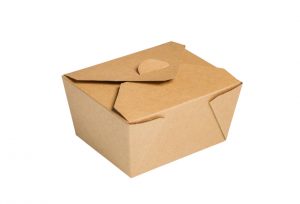 In the food industry, packaging options are seemingly endless. From a practical standpoint, there are a few key materials that consistently get the job done and are considered industry staples. They’re tried and true and continue to be the most popular options for shipping, storage and shelves.
In the food industry, packaging options are seemingly endless. From a practical standpoint, there are a few key materials that consistently get the job done and are considered industry staples. They’re tried and true and continue to be the most popular options for shipping, storage and shelves.
Of course, your specific packaging requirements boil down to what’s best for your business — whether it’s being economical, trendy or otherwise.
With that in mind, the below guide breaks down some of the key differences in five types of food packaging.
What Are You Looking for in Your Packaging?
Before we dig into the different types of food packaging, it helps to understand a few key characteristics. Some materials are more ideal depending on what you want.
- Flexible: Flexible packaging is well-suited for food products with varying — or even interesting — sizes and shapes. Rather than traditional packaging that is square, cylindrical or any other common shape, flexible packaging can be adjusted. It’s a good feature when marketing how your product can be smartly stored in a pantry, for example.
- Rigid: Rigid food packaging is as the name suggests. Materials are firm and are ideal for liquid products. Considered to be a more traditional packaging type, rigid packaging continues to be a popular option for food manufacturers.
- Semi-flexible: Of course, the food packaging industry is innovative, so an in-between option exists. With tetra packs, caps and closures, you have options that are flexible enough for customization while being rigid enough for products that require it.
5 Kinds of Food Packaging
- Cardboard continues to be a leader in consumer food packaging. It’s sturdy and comes in a variety of thickness and size. Cardboard containers are safe for shipping, easy to handle, and excellent for storage on the shelf and at a consumer’s home. It’s also a great packaging type for pairing with other materials to add support and functionality.
- Paper is another popular food packaging type. A material called paperboard is commonly used for handheld food containers. It’s thicker and heavier than regular paper but is lightweight and easy to handle. You’ll find paperboard packaging in products such as milk, cereal and fruit juice boxes. Some types of paperboard can be made from recycled materials, as well.
- Plastic revolutionized the food packaging industry. For the last century, it’s gone from a luxury packaging option to one of the most common materials used. Because it’s so malleable, plastic packaging can be customized in almost any shape and size imaginable. What’s more, plastic packaging is airtight and durable, making it a great option for perishable and non-perishable food products.
- Metal isn’t as common in food manufacturing as paper or plastic, but it is growing in popularity. Consumers are increasingly concerned with their environmental impact. While the materials listed above are mostly recyclable, the combinations of materials can make that process more complicated (a paperboard box with a plastic window and cardboard spacers, for example). Metal is seen as a solution to the reusable problem, as more companies are offering refill options. Beyond sustainability, metal is a favorite because of its strength and durability.
- Glass is another food industry favorite because it combines food safety with aesthetics. Glass packaging can be crafted in a wide range of shapes to create an excellent display of the food. While it’s heavier than some of the options listed above, it’s strong and fairly resilient. Glass is an excellent material for protecting food substances from outside contaminants.
PacMoore Brings All of Your Food Packaging Options Under One Roof
Whatever your material preference (with some exceptions, including a current lack of ability to work with cans or jars), our packaging experts work alongside you to determine the smartest options that balance budget with functionality and aesthetics.
Traditional packaging types for food are just the start. As food industry leaders, we keep ahead of packaging trends and are among the first to test and perfect new packaging materials. We specialize in every aspect of food manufacturing — from collaborating on food production to providing packaging and shipping solutions. We even offer ingredient storage services so that you can plan and time your food production in a way that makes sense for your business. Your satisfaction is our top priority.
To learn more about types of consumer packaging and the wide range of materials and services available to you, contact PacMoore today.